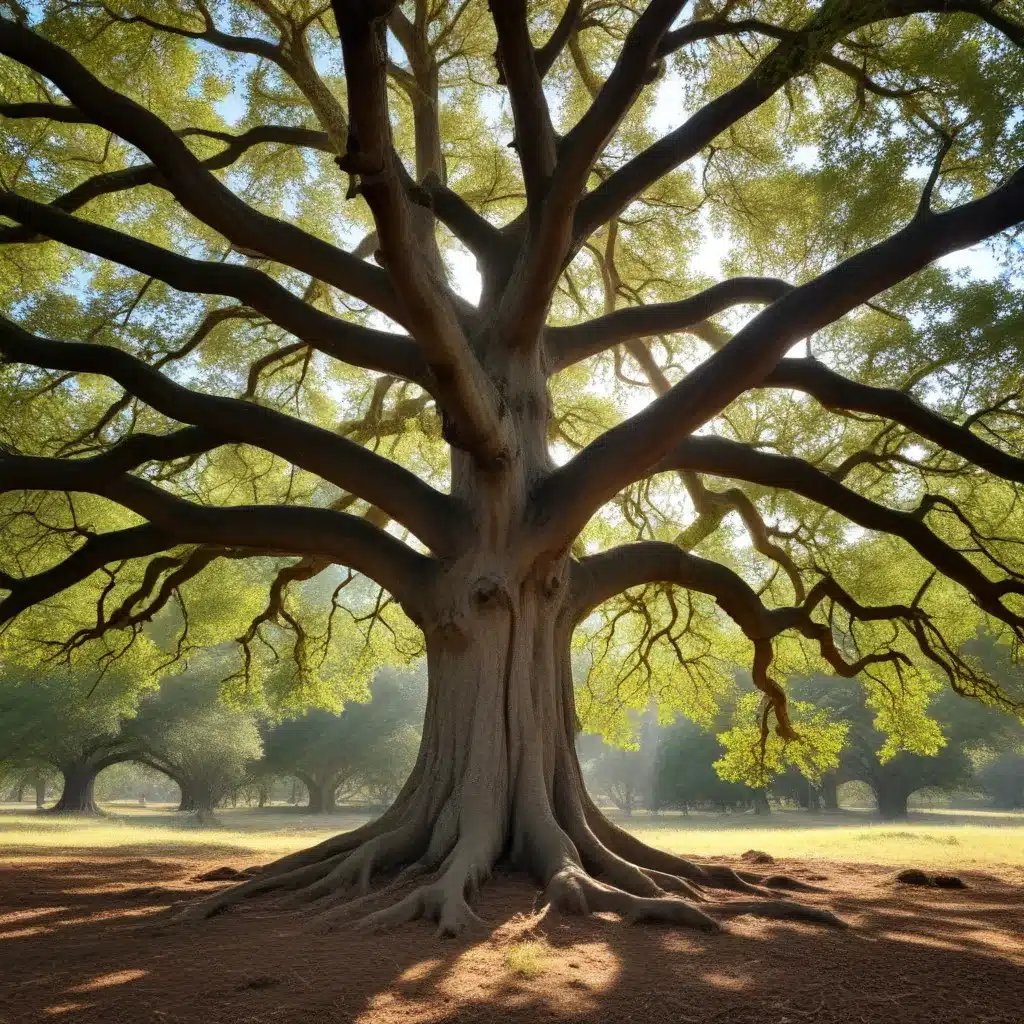
Oak Tree Anatomy
The oak tree (Quercus spp.) is a diverse, iconic genus of flowering plants native to the Northern Hemisphere. With over 400 species, oaks exhibit a wide range of structural features adapted to their environments. At the core of the oak’s anatomy are several key components that work in harmony to sustain this resilient, long-lived tree.
Trunk and Bark
The oak’s trunk is its central support structure, rising from the roots to the canopy. Covered in a thick, rugged bark, the trunk is composed of dense, durable wood that provides strength and longevity. As the tree ages, the bark develops deep fissures and plates, creating the oak’s characteristic rough, scaly appearance. This bark serves as insulation, protecting the cambium layer and inner tissues from temperature extremes, pests, and disease.
Leaves and Branches
The oak’s distinctive leaves are typically lobed, with shapes varying by species. Their thick, leathery texture and waxy cuticle help conserve moisture and ward off herbivores. The branches grow in an alternating, spiral pattern, extending the canopy and providing platforms for leaves to capture sunlight. These broad, spreading branches give the oak its majestic, spreading silhouette.
Root System
Anchoring the tree is the robust root system, which extends far underground, often reaching as wide as the canopy. The primary taproot plunges deep into the soil, while lateral feeder roots spread outward, seeking water and nutrients. This extensive network not only stabilizes the tree but also enables the oak to access resources over a large area, contributing to its longevity.
Oak Tree Life Cycle
From acorn to ancient giant, the oak’s life cycle is a study in resilience and adaptation. Each stage of development demonstrates the oak’s remarkable capacity to thrive in diverse environments.
Acorn Germination
The oak’s life begins with the acorn, a distinctive nut encased in a tough, leathery shell. When conditions are favorable, the acorn germinates, sending down a taproot that anchors the young seedling. The first leaves, known as cotyledons, emerge and provide initial nourishment before the true leaves unfurl.
Sapling Growth
As the oak seedling matures into a sapling, its trunk thickens and the root system expands. The young tree allocates substantial energy to establishing a sturdy foundation, with a focus on vertical growth to reach sunlight. Saplings exhibit a high tolerance for shade, allowing them to establish in forested understories before transitioning to the canopy.
Mature Tree Characteristics
Reaching adulthood, the oak tree develops its signature broad, spreading canopy supported by a thick, gnarled trunk. Mature oaks can live for centuries, some even millennia, thanks to their resilience and adaptive strategies. The tree’s growth rate slows, but it continues to add annual rings to the trunk, recording its history in the wood.
Oak Tree Ecology
Oaks play a vital role in the ecosystems they inhabit, serving as foundation species that support a diverse web of life. Their ecological significance extends from the local to the global scale.
Oak Habitats
Oaks thrive in a range of climates, from temperate forests to Mediterranean woodlands. Their adaptability allows them to dominate many regions, forming oak-hickory or oak-pine forests. In some areas, oaks are the climax species, reaching massive sizes and ages as they become the dominant canopy trees.
Oak-Dependent Species
Countless organisms, from insects to mammals, rely on oaks for food, shelter, and habitat. Acorns are a critical food source for wildlife, sustaining everything from squirrels to bears. Cavities in the trunk and branches provide nesting sites for birds, while the leaf litter supports a diverse soil ecosystem.
Oak Symbiotic Relationships
Oaks form intricate symbiotic relationships with other organisms, particularly fungi. The tree’s roots host mycorrhizal fungi, which enhance the oak’s ability to absorb water and nutrients in exchange for carbohydrates. This mutually beneficial partnership is essential for the oak’s growth and resilience.
Oak Tree Uses and Significance
Beyond their ecological importance, oaks have been revered by humans for millennia, providing a wealth of practical and cultural benefits. Their versatility and longevity have cemented the oak’s status as a symbol of strength, endurance, and connection to the natural world.
Timber and Wood Products
Oak wood is highly prized for its strength, durability, and attractive grain. It has been used for centuries in construction, furniture-making, and the production of wine and whiskey barrels. The wood’s resistance to decay and insect damage makes it a valuable resource for TriCounty Tree Care and other arboricultural applications.
Culinary and Medicinal Uses
Acorns, the oak’s signature nuts, have been a food source for humans and wildlife for thousands of years. Though bitter when raw, acorns can be processed and prepared in various ways, providing a nutritious source of carbohydrates, fats, and protein. Oak bark and leaves have also been used in traditional medicine to treat a range of ailments.
Cultural and Historical Importance
Oaks have long held a prominent place in human mythology, folklore, and symbolism. The tree’s longevity, strength, and connection to the natural world have made it a revered icon in many cultures, representing virtues like wisdom, nobility, and endurance. Oaks have been used in sacred rituals, featured in works of art and literature, and even incorporated into national emblems and heraldic designs.
The mighty oak tree, with its iconic form and deep-rooted ecological significance, continues to captivate and inspire humans across the globe. By understanding the mysteries of this remarkable plant, we can better appreciate the oak’s vital role in the natural world and its enduring significance in human history and culture.


